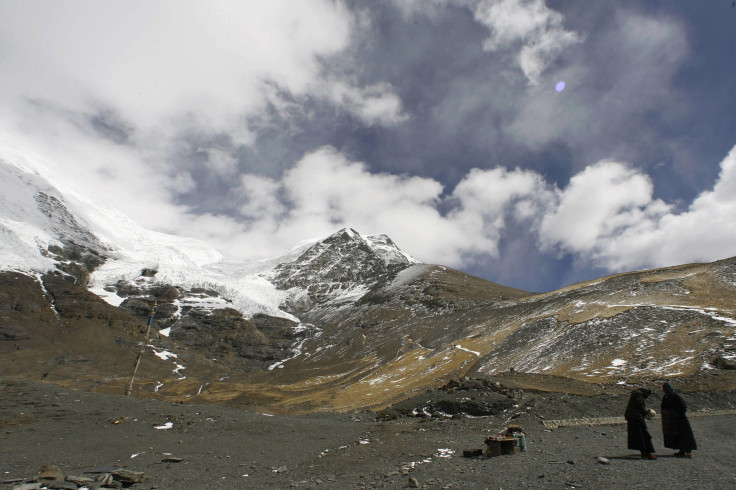Climate Change: Dalai Lama Urges Action To Save Tibet, The World's 'Third Pole'

Earlier this month, an analysis by the Climate Action Tracker found that despite international pledges to curb greenhouse gas emissions, average global temperatures might still rise by up to 2.7 degrees Celsius (4.8 degrees Fahrenheit) above pre-industrial levels by the end of the century. This rise, which is above the internationally accepted red line of 2 degrees Celsius (3.6 degrees Fahrenheit), is likely to be catastrophic for the world as a whole.
While the impact of this temperature rise on small island nations in the Pacific and elsewhere is now being widely acknowledged, several other vulnerable regions across the globe still do not figure in discussions about climate change. One such region is Tibet, where the planet's changing climate is melting glaciers and degrading permafrost.
“This blue planet is our only home and Tibet is its roof. As vital as the Arctic and Antarctic, it is the Third Pole” the Dalai Lama, Tibet’s exiled Buddhist leader said, in a statement released Tuesday. “The Tibetan Plateau needs to be protected, not just for Tibetans but for the environmental health and sustainability of the entire world.”
The statement, which urges international leaders to put Tibet at the center of climate talks to be held in Paris later this year, comes at a time of a widening rift between developing countries and rich nations, with the former complaining of “apartheid” treatment at the hands of the latter.
According to the Tibetan government-in-exile, the Tibetan plateau, which is the largest store of ice outside the North and South Pole, has witnessed a temperature rise of 1.3 degrees Celsius (2.3 degrees Fahrenheit) over the past 50 years. As a result, 82 percent of the ice in Tibet has retreated in the past five decades, and, over the past decade, 10 percent of the alpine permafrost -- which stores about 12,300 million tons of carbon -- has degraded.
“Tibet is facing the impact of climate change with retreating glaciers, deteriorating permafrost, degrading grasslands and increasing desertification,” the Central Tibetan Administration said, in the statement. “The United Nations Development Program reports that Tibet’s grasslands are turning into desert at a rate of 2,330 square kilometres per year.”
There is also an economic angle to the discussion about the quality of Tibet's permafrost. Scientists argued, as far back as 2009, that China's ambitious high-altitude railroad project -- that connects Tibet to the rest of the country and is built on the plateau's layer of permafrost -- could be at risk as the region is buffeted by the effects of climate change.
Tibet's leaders said they want a “meaningful” climate change agreement -- a major goal of the Paris climate talks -- and also want to have a say in the negotiations.
“Solutions to the climate crisis exist. What is needed is political will and action,” Kalon Dicki Chhoyang, who heads the department for information and international relations in the Central Tibetan Administration, said, in the statement.
© Copyright IBTimes 2024. All rights reserved.






















